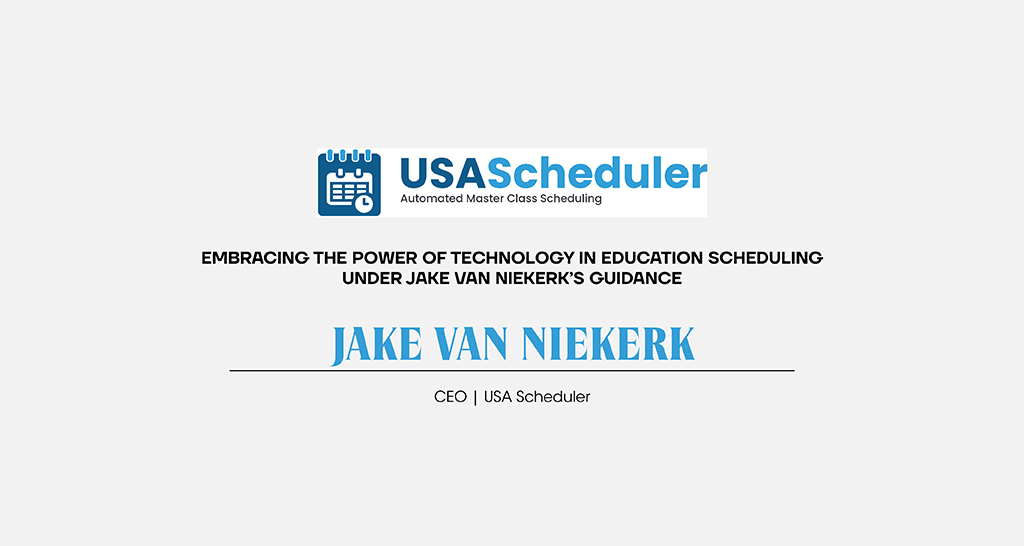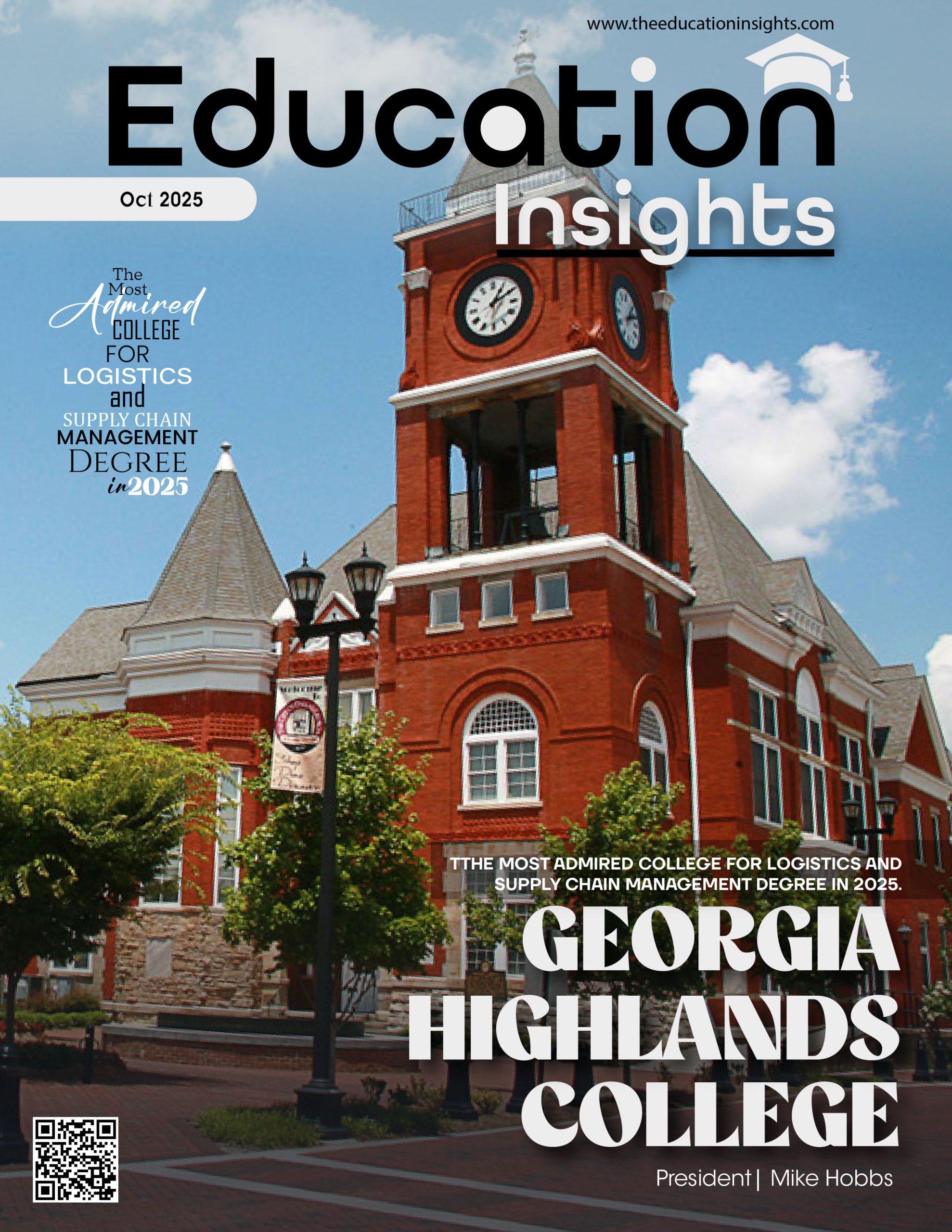The education technology landscape is rapidly evolving, and USA Scheduler is at the forefront of this transformation. Led by CEO Jake van Niekerk, the company is redefining how schools approach scheduling and management by combining innovation with a deep commitment to customer satisfaction.
The Inspiration behind USA Scheduler
Creating a master class schedule is a crucial task for counselors and administrators, as it directly affects students’ academic and career pathways, teachers’ course loads, and the efficient use of rooms and resources. Traditionally, this process has been done manually, making it both time consuming and costly. Consequently, it often results in suboptimal schedules, where many students do not receive their preferred course choices and resources are not utilized as effectively.
Recognizing these challenges, Jake van Niekerk set out to develop a software solution designed to streamline the scheduling process. His goal: to dramatically reduce the time and cost involved while producing optimized, high quality schedules that surpass those created by hand.’
Overcoming the Challenges Along the Way
One of Jake’s greatest challenges was developing a software solution that not only detects scheduling conflicts but also resolves them seamlessly. The exclusive Conflict Resolution Matrix of USA Scheduler provides real-time alternative course options, enabling users to address conflicts with just a click. Large high schools using USA Scheduler can now eliminate all scheduling conflicts in just a few hours.
The Defining Moment in Jake’s Journey
The latest version of USA Scheduler, released this year, features a significantly improved build engine that can perform up to 20 million calculations per minute. This enhancement ensures even greater scheduling accuracy while saving time. Additionally, the software is now cloud based, offering enhanced flexibility, and it boasts a more intuitive, user-friendly interface.
The Core Values, Driving Jake’s Leadership
Jake emphasizes the importance of honesty, responsiveness, and delivering real value by truly understanding each client’s unique needs and offering tailored solutions. This client-centric approach sets USA Scheduler apart—schools see the company not merely as a vendor, but as a trusted partner. It’s this unwavering dedication to client success that keeps schools coming back, year after year.
The Key Motivation Behind Innovation in the EduTech Landscape
Jake and his team are committed to being the most effective and responsive automated master scheduling solution available. They achieve this by actively listening to the unique needs of every school and district they partner with.
As a result, their software continuously learns and adapts, effortlessly managing everything from simple middle school schedules to the most complex university timetables.
Ensuring Security, Accuracy, and Efficiency
USA Schedule adheres to the highest standards of data security and is fully compliant with COPPA, FERPA, and SOPIPA regulations. Additionally, USA Scheduler holds NYC DOE Cloud certification.
The Proud Innovation at USA Scheduler
According to Jake, the standout innovation of USA Scheduler is its build engine. This cutting-edge engine is the core of the automation scheduling system, capable of performing up to 20 million calculations per minute. This remarkable speed sets it apart from any other scheduling solution available.
Transformation in the Education Scheduling and Management Process
USA Scheduler has continuously evolved and improved over the past 10 years. Currently, the speed of its advanced and patent-pending build engine approaches the efficiency and accuracy of an AI-driven system. This leads to a consistent 95% accuracy on the first schedule created after inputting school data. Throughout the years, the software has learned from the various schedules the company has managed, enabling it to adapt and successfully handle even the most complex master schedules.
Major Gaps in EdTech Solution
Schools use multiple EdTech tools, but the integration between Learning Management Systems (LMS), student information systems (SIS), and scheduling software is often clunky or nonexistent. While some progress is being made with solutions like Ed-Fi, a universal standard for seamless data exchange would significantly enhance efficiency.
Improvements by Machine Learning and Predictive Analytics
USA Scheduler’s software utilizes machine learning and predictive analytics to enhance the scheduling process in several key ways. It currently analyzes multi-year enrollment trends to predict course demand, which allows schools to optimize class sizes, scheduling periods, and faculty assignments. Additionally, its system identifies and resolves scheduling conflicts. However, its capabilities could be further improved by incorporating factors such as students’ academic progress, prerequisite requirements, and personal preferences. This would ensure a more tailored and efficient scheduling experience.
Common Misconceptions about Scheduling Software and EdTech
A frequent misconception among schools regarding the USA Scheduler’s scheduling system is that it seems “too good to be true.” However, once they experience its capabilities firsthand, they find themselves renewing their licenses year after year. Numerous customer testimonials and a 5-star rating on Capterra prove the scheduler’s effectiveness and the value it provides to institutions.
Impact of Hybrid and Online Learning
The impact on the scheduling process has been minimal. USA Scheduler successfully managed to schedule numerous schools and districts even during the COVID-19 pandemic, seamlessly adapting to hybrid and online learning environments.
Upcoming Technologies and Innovations
Jake says that, if he were to take on the role of a science f iction writer, he would envision a scheduling system that integrates seamlessly with a student’s course schedule, driven by true AI adaptability rather than a complex decision tree model.
USA Scheduler: Over the Next Five Years
Looking ahead, USA Scheduler improves the speed of its build engine, incorporating AI to facilitate better student course selections based on career tracks, prerequisites, academic performance, and personal interests.










